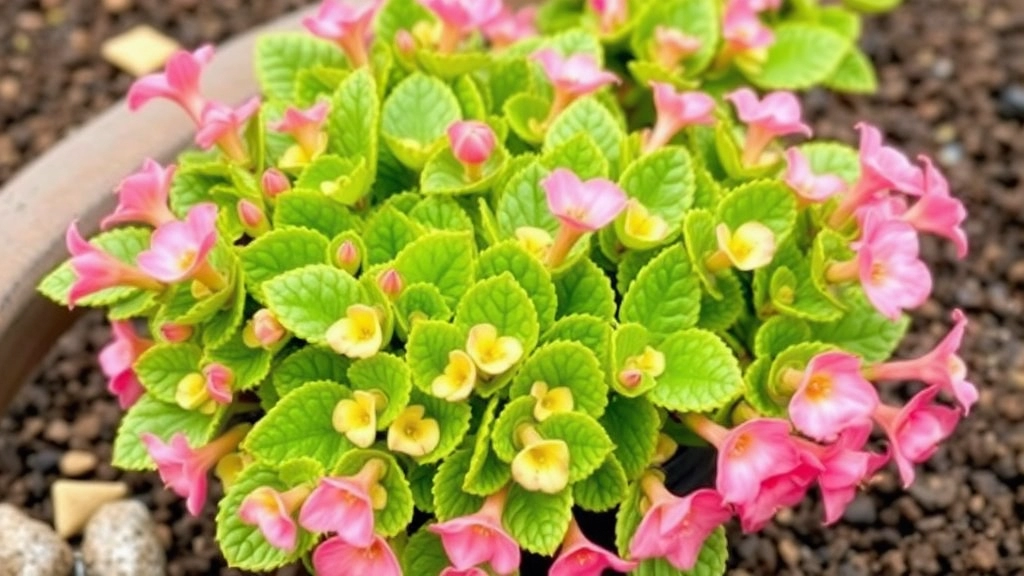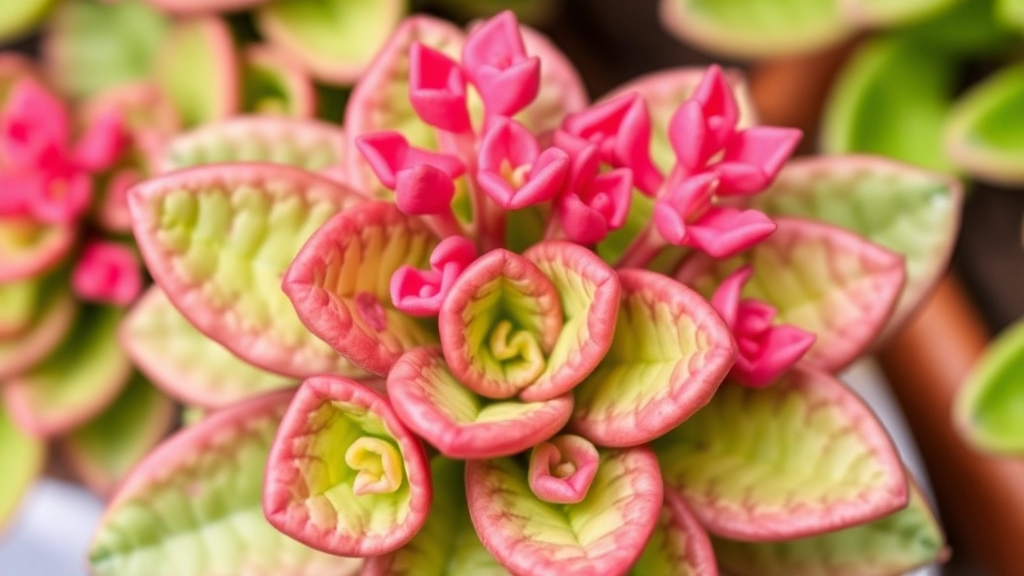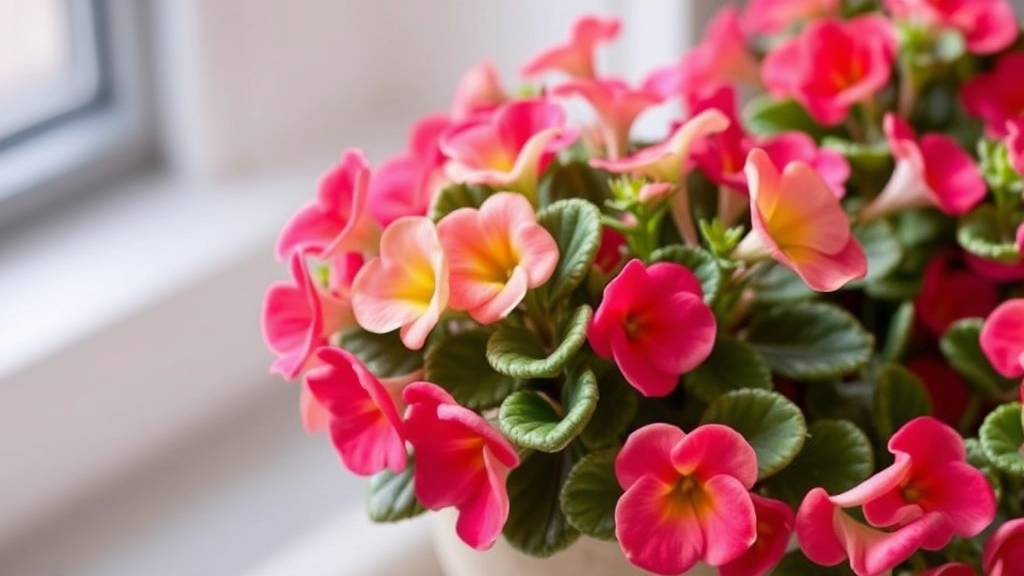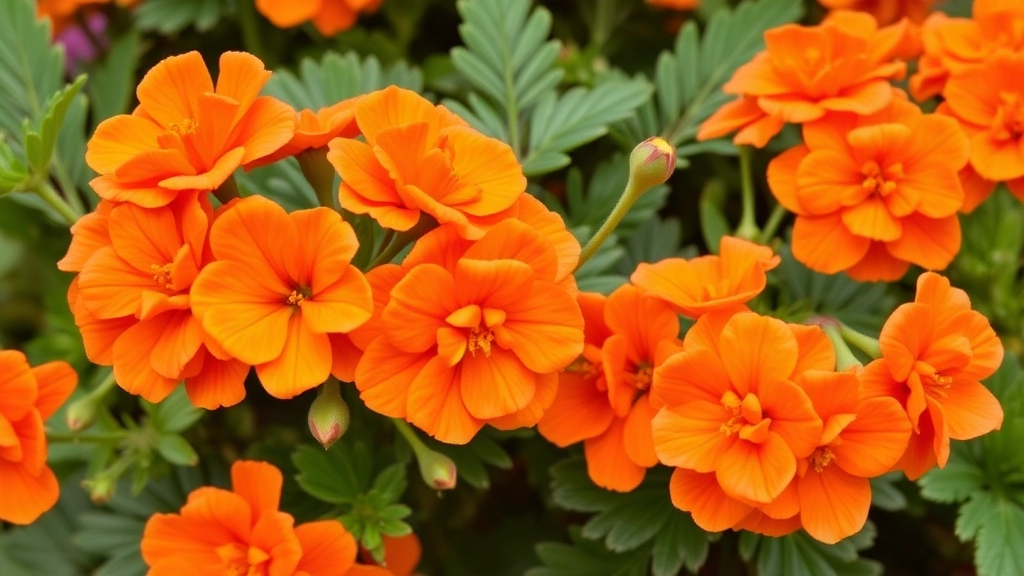Introducing the Florist Kalanchoe Orange
Looking to add a splash of vibrant colour to your indoor garden? The Florist Kalanchoe Orange is a fantastic choice. Known for its striking orange blooms and minimal care requirements, this succulent is perfect for both novice and experienced gardeners. Whether you’re interested in its growth habits, care tips, or where to buy one, this article will cover everything you need to know about the orange variant of Kalanchoe blossfeldiana.
Ideal Growing Conditions
To keep your Florist Kalanchoe Orange thriving, understanding its ideal growing conditions is key. This plant flourishes in well-draining soil and requires moderate watering, making it low-maintenance. Adequate sunlight is essential for robust flowering, while proper care can help avoid common issues like overwatering or pests.
Propagation and Reblooming Tips
If you’re keen on propagating this succulent or want to encourage reblooming, we’ve got you covered with practical tips and tricks.
Ideal Growing Conditions for Orange Florist Kalanchoe
Are you struggling to keep your Orange Florist Kalanchoe thriving?
Understanding the ideal growing conditions is essential for nurturing this vibrant succulent.
Climate and Temperature
Orange Florist Kalanchoe thrives in a warm environment.
- Optimal Temperature: Aim for 18°C to 24°C (65°F to 75°F).
- Avoid Frost: Protect your plant from temperatures below 10°C (50°F).
Humidity Levels
These succulents prefer low humidity.
- Ideal Humidity: 40% to 60% is perfect.
- Ventilation: Ensure good air circulation to prevent fungal issues.
Soil Requirements
Choosing the right soil is crucial for the health of your Kalanchoe.
- Soil Type: Use a well-draining cactus or succulent mix.
- pH Level: Aim for a slightly acidic to neutral pH (6.0 to 7.0).
Container Selection
The right pot can make all the difference.
Watering and Soil Requirements for Kalanchoe Blossfeldiana

So, you’ve got your eye on that vibrant Orange Florist Kalanchoe, but how do you keep it thriving?
First off, let’s talk about watering. This succulent loves a bit of moisture but can easily get overwhelmed. Here’s the lowdown:
- Water Sparingly: Allow the top inch of soil to dry out before giving it a drink. Too much water can lead to root rot, which is a nightmare for your plant.
- Check the Soil: Stick your finger in the soil. If it feels dry, it’s time to water. If it’s still damp, hold off for a bit.
- Seasonal Adjustments: In the warmer months, you might need to water more often, while in winter, cut back to avoid overwatering.
Now, onto soil. Kalanchoe Blossfeldiana thrives in:
- Well-Draining Soil: Use a cactus or succulent mix, or create your own by mixing regular potting soil with sand or perlite.
- Pot Choice: Choose pots with drainage holes. This helps excess water escape and keeps your plant happy.
Remember, the right balance of water and soil can make or break your Kalanchoe’s growth.
When caring for the Orange Florist Kalanchoe, understanding its light requirements and flowering cycle is crucial for thriving plants. Many plant enthusiasts often worry about how much light their Kalanchoe needs to bloom beautifully.
Kalanchoe Blossfeldiana thrives in bright, indirect sunlight. Here are some key points to consider:
– **Ideal Positioning:** Place your Kalanchoe near a south or west-facing window where it can absorb ample light without being scorched.
– **Duration:** Aim for at least 6 hours of light daily. Insufficient light can lead to leggy growth and fewer blooms.
– **Artificial Light:** If natural light is limited, consider using grow lights for 12-14 hours a day, especially during the shorter days of winter.
The flowering cycle of the Orange Kalanchoe is a fascinating aspect of its care. Here’s what to know:
– **Blooming Period:** Typically, Kalanchoe flowers from late winter to early spring. The vibrant orange blooms can last for several weeks.
– **Triggering Blooms:** To encourage blooming, ensure your plant experiences a period of darkness. A minimum of 14 hours of uninterrupted darkness can stimulate the flowering process.
– **Post-Bloom Care:** After blooming, it’s essential to prune the spent flowers. This encourages new growth and prepares the plant for its next blooming cycle.
For more detailed information, you can check out the [complete guide to growing and caring for Kalanchoe Pink Butterflies](https://planthq.org/complete-guide-to-growing-and-caring-for-kalanchoe-pink-butterflies/) and [optimal watering tips for healthy Florist Kalanchoe](https://planthq.org/optimal-watering-tips-for-healthy-florist-kalanchoe/).
Common Problems and Solutions in Caring for Kalanchoe

Caring for your Orange Florist Kalanchoe can sometimes feel like a balancing act.
You might find yourself asking: Why are the leaves turning yellow? or What’s causing my Kalanchoe to wilt?
These are common concerns, but don’t worry; I’m here to help you troubleshoot and keep your succulent thriving.
1. Yellowing Leaves
Causes:
- Overwatering
- Poor drainage
- Nutrient deficiency
Solutions:
- Check the soil moisture. If it’s soggy, reduce watering frequency.
- Ensure your pot has drainage holes to prevent waterlogging.
- Consider a balanced fertiliser every few months during the growing season.
2. Wilting
Causes:
- Underwatering
- Extreme temperatures
Solutions:
- Assess the soil moisture. If it’s dry, give your plant a good drink.
- Keep your Kalanchoe in a stable environment, away from drafts and direct heat sources.
3. Pests
Common Pests:
- Mealybugs
- Aphids
Solutions:
- Inspect your plant regularly. If you spot pests, wipe them off with a damp cloth.
- For a more significant infestation, consider using insecticidal soap or neem oil.
4. Lack of Flowers
Causes:
- Insufficient light
- Improper pruning
Solutions:
- Ensure your Kalanchoe is receiving bright, indirect sunlight.
- After blooming, prune spent flowers to encourage new growth.
How to Propagate Orange Kalanchoe Succulents
You may be wondering how to expand your collection of Orange Kalanchoe succulents without breaking the bank. Propagation is an excellent way to achieve this while enjoying the process.
Methods of Propagation
There are two primary methods for propagating Orange Kalanchoe:
Best Indoor Uses for Florist Kalanchoe

So, you’ve got your stunning Orange Florist Kalanchoe and you’re wondering where to put it, right?
These vibrant little succulents are not just pretty faces; they can brighten up your space in various ways.
1. Decorative Centerpieces
Using Kalanchoe as a table centerpiece can really elevate your dining experience.
- Mix and Match: Pair it with candles or other plants for a dynamic look.
- Seasonal Themes: Change the pot or surrounding decor for different seasons or holidays.
2. Window Sills
Kalanchoe loves light, making window sills the perfect spot.
- Natural Light: They thrive in bright, indirect sunlight.
- Visual Appeal: Their vibrant blooms can make any room feel more inviting.
3. Office Spaces
Need a little cheer at work?
- Low Maintenance: Kalanchoe doesn’t need constant attention, perfect for busy schedules.
- Air Quality: They can help improve indoor air quality, making your workspace healthier.
4. Gifts for Friends
These beauties make excellent gifts.
- Personal Touch: Add a handwritten note or a decorative pot.
- Perfect for Any Occasion: Birthdays, housewarmings, or just because!
5. Bathroom Decor
Surprising, right?
- Humidity Lover: Kalanchoe can thrive in the humid environment of a bathroom.
- A Splash of Colour: Brighten up a usually overlooked space with their vibrant blooms.
6. Children’s Rooms
Want to teach kids about plants?
- Engagement: They’re easy to care for, making them perfect for young gardeners.
- Fun Varieties: The bright orange flowers can spark interest and creativity.
7. Terrariums
If you’re into DIY, consider making a terrarium.
- Mini Ecosystem: Kalanchoe can thrive in a glass container with the right conditions.
- Creative Outlet: Get crafty with pebbles and other succulents.
### Seasonal Blooming and How to Encourage Reblooming
Are you wondering why your Orange Florist Kalanchoe isn’t blooming as expected? Seasonal blooming can be a bit tricky, but with the right care, you can encourage your Kalanchoe to show off its vibrant flowers more than once a year.
Understanding the Blooming Cycle
The Orange Kalanchoe typically blooms in the late winter to early spring. This is when it showcases its stunning clusters of bright orange flowers. However, it can be disheartening if your plant only blooms once.
Tips to Encourage Reblooming
To help your Kalanchoe rebloom, follow these straightforward steps:
- Pruning: After the initial bloom fades, trim off the spent flowers. This not only tidies up the plant but also encourages new growth. Learn more about pruning your Florist Kalanchoe for optimal growth.
- Light Adjustment: Ensure your Kalanchoe receives plenty of bright, indirect sunlight. If it’s not getting enough light, it may not bloom again.
- Watering Routine: Allow the soil to dry out between waterings. Overwatering can hinder blooming. For more tips, check out our guide on how often Kalanchoe bloom and rebloom.
- Fertilisation: Use a balanced fertiliser every 4-6 weeks during the growing season to provide essential nutrients.
- Rest Period: After blooming, give your Kalanchoe a rest period. Reduce watering and stop fertilising for about 6 weeks. This mimics its natural cycle and prepares it for the next bloom.
Common Concerns
Many plant enthusiasts worry about their Kalanchoe becoming leggy or losing leaves. This often indicates insufficient light or overwatering. Adjusting these factors can greatly improve blooming potential.
Where to Buy Orange Florist Kalanchoe
So, you’ve decided you want to add the vibrant Orange Florist Kalanchoe to your collection. Great choice!
But where do you actually find one?
Local Garden Centres and Nurseries
One of the best places to start is your local garden centre or nursery.
- Hands-On Experience: You can see the plants in person, check their health, and even chat with knowledgeable staff.
- Seasonal Availability: They often stock seasonal blooms, so you might find a stunning Orange Kalanchoe during its peak time.
Online Retailers
If you prefer shopping from the comfort of your home, online retailers are a fantastic option.
- Reputable Sites: Look for well-known gardening websites or platforms like Amazon.
- Customer Reviews: Always check reviews to ensure you’re getting a healthy plant.
- Delivery Options: Many online stores offer delivery, which is super convenient.
Specialty Plant Shops
Don’t overlook specialty shops that focus on succulents and houseplants.
- Unique Varieties: They might have different varieties of Kalanchoe or even rare colours.
- Expert Advice: The staff are usually passionate and can offer great tips on care.
Farmers’ Markets
Sometimes, the best finds are at local farmers’ markets.
- Local Growers: You can often buy directly from growers who know their plants inside out.
- Fresh Stock: The plants are usually fresh and well-cared for.
Social Media and Plant Swap Groups
Finally, consider checking social media platforms or local plant swap groups.
- Community Connections: You might find someone looking to sell or trade their Orange Kalanchoe.
- Unique Finds: This can lead you to unique plants that aren’t available in stores.
For more detailed care tips, check out our complete guide to Kalanchoe plant care. If you’re interested in exploring more varieties, consider reading about the vibrant Kalanchoe Blossfeldiana.
Frequently Asked Questions (FAQs)
What are the watering requirements for an Orange Florist Kalanchoe?
Water sparingly and allow the top inch of soil to dry out before watering again. Overwatering can lead to root rot. Adjust your watering frequency based on the season, watering more in warmer months and less in winter.
What type of soil is best for Kalanchoe Blossfeldiana?
Kalanchoe Blossfeldiana thrives in well-draining soil. Use a cactus or succulent mix, or create your own by mixing regular potting soil with sand or perlite. Ensure your pot has drainage holes to prevent waterlogging.
Why are the leaves of my Kalanchoe turning yellow?
Yellowing leaves can be caused by overwatering, poor drainage, or nutrient deficiency. Check the soil moisture and ensure your pot has drainage holes. Consider using a balanced fertilizer during the growing season.
What should I do if my Kalanchoe is wilting?
Wilting can be due to underwatering or extreme temperatures. Assess the soil moisture and water if it’s dry. Keep the plant in a stable environment, away from drafts and direct heat sources.
How can I deal with pests on my Kalanchoe?
Common pests include mealybugs and aphids. Inspect your plant regularly and wipe off pests with a damp cloth. For significant infestations, consider using insecticidal soap or neem oil.
Why is my Kalanchoe not flowering?
Lack of flowers can result from insufficient light or improper pruning. Ensure your Kalanchoe receives bright, indirect sunlight and prune spent flowers after blooming to encourage new growth.
Where are the best places to display my Orange Florist Kalanchoe indoors?
There are several ideal spots for your Kalanchoe:
- Decorative Centerpieces: Use them as table centerpieces, pairing with candles or other plants.
- Window Sills: They thrive in bright, indirect sunlight and add visual appeal.
- Office Spaces: Low maintenance and can improve indoor air quality.
- Gifts for Friends: Perfect for any occasion, adding a personal touch with a decorative pot or note.
- Bathroom Decor: They thrive in the humid environment and add a splash of color.
- Children’s Rooms: Easy to care for, making them great for young gardeners.
- Terrariums: Ideal for DIY projects, creating a mini ecosystem in a glass container.
References
-
Kalanchoe Plant Care – Gardening Know How
-
How to Grow Kalanchoe Indoors – The Spruce
-
Kalanchoe: How to Grow and Care for Kalanchoe Plants – The Old Farmer’s Almanac
